Focus on Wood
Project: World of Volvo
Location: Gothenburg, Sweden
Architect: Henning Larsen
The carmaker gears up to showcase its brand with a sculptural “experience center”
BY JAMES GAUER
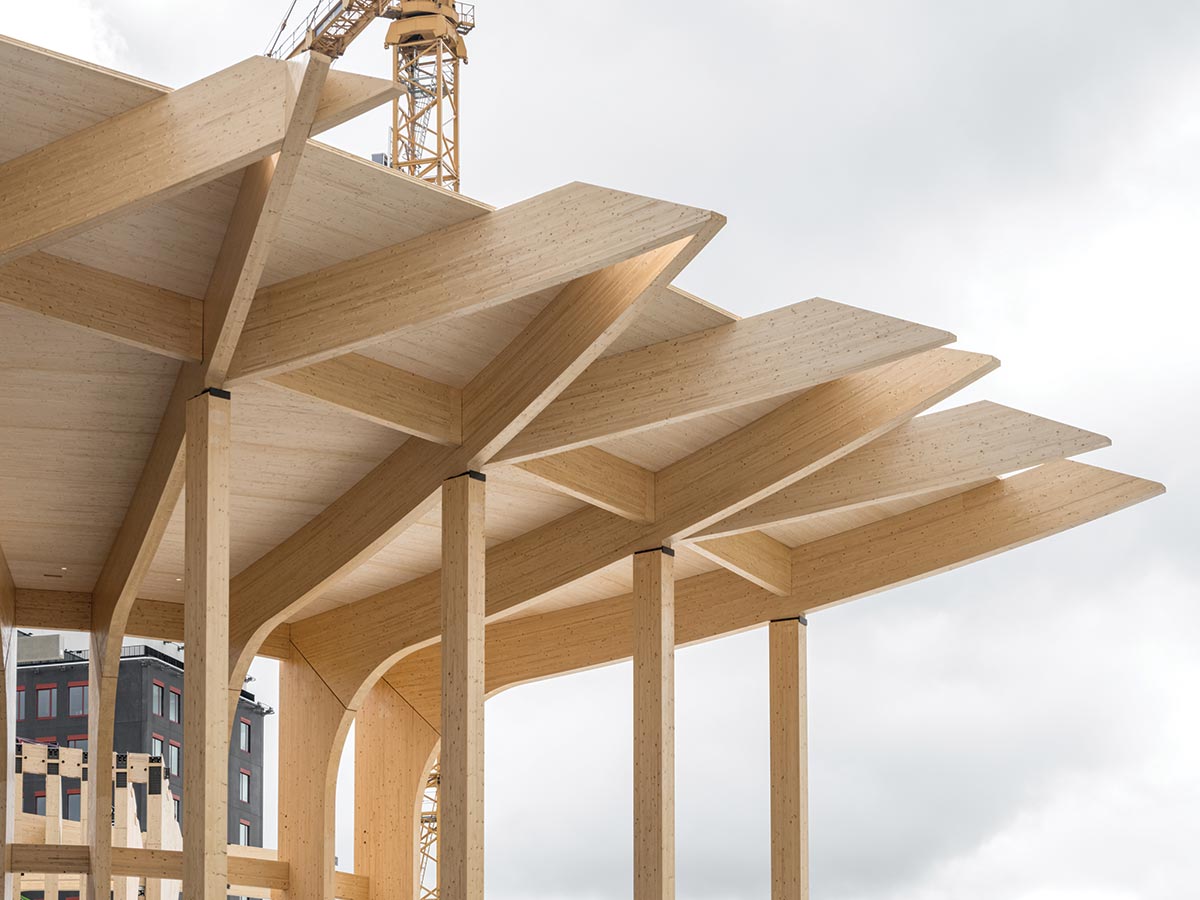
Photo © RASMUS HJORTSHØJ
Splayed mass-timber ribs structure the circular exhibition center.
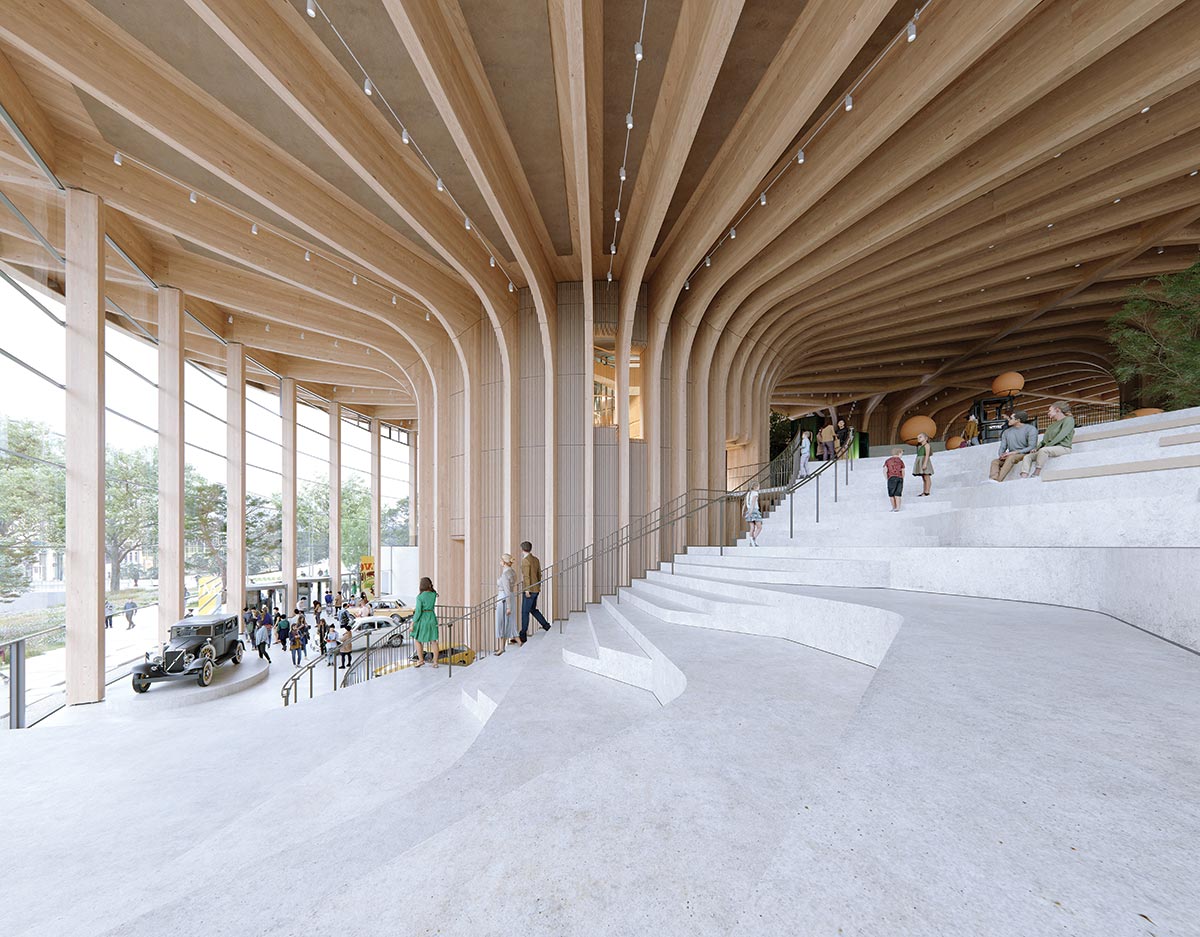
Image © KVANT
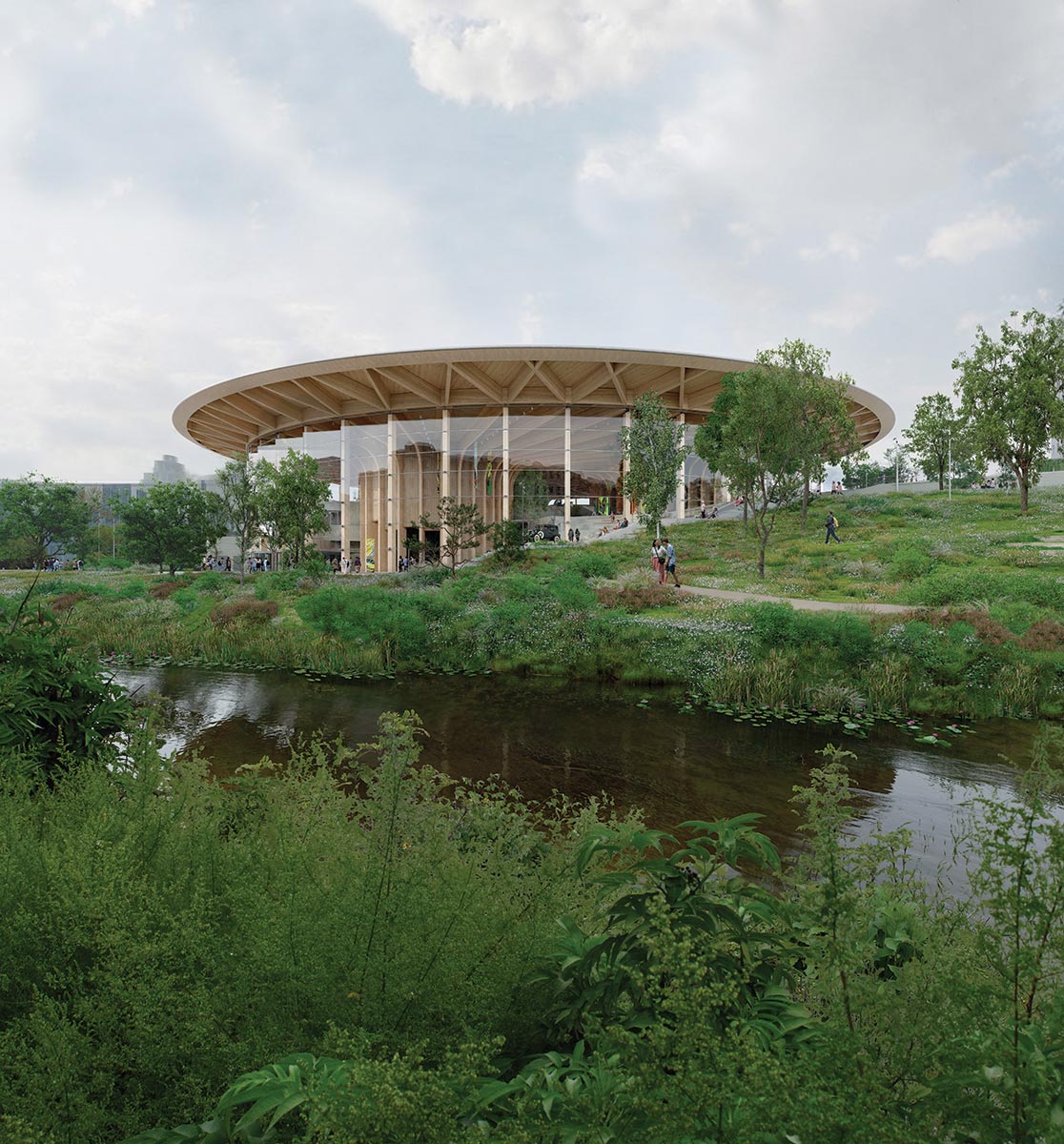
Image © KVANT
Wood is ubiquitous in the architectural heritage of Scandinavia, whose forests have long supplied an abundance of the building material. “It dates back to the Viking era and has remained an important aspect of Swedish architecture ever since,” says Martin Stenberg Ringnér, associate design director of Henning Larsen. Based in Copenhagen, the firm has designed World of Volvo, an “experience center” combining entertainment, exhibitions, food and drink, and retail in a single structure, now under construction and due to open to visitors in 2024. For this 236,000-square-foot project, located in the Swedish city of Gothenburg (which bills itself as “the world’s most sustainable destination”), timber takes center stage.
Situated in Gothenburg’s event district, home to many of the city’s museums, parks, and theaters, World of Volvo is a large-scale branding exercise that aims to immerse visitors in the company’s history, values, and aspirations through exhibits and product displays. The building’s site, between the E6 highway to the east and the Mölndalsån river to the west, is adjacent to a pedestrian and bicycle path that runs north along the water to the city center.
If you think of mass-timber buildings as boxy and predictable, World of Volvo will make you think again. Viewed from the riverfront, it’s a glass cylinder, more than 300 feet in diameter and almost 100 feet tall, nestled into a grassy hillside. Clearly visible behind the building’s glass curtain wall are the timber columns supporting a deeply overhanging cantilevered wood-framed roof. Inside are three smaller timber cylinders conceived as metaphorical “trees” whose “trunks” contain exhibition spaces and vertical circulation. The trunks are framed in glulam columns, which branch out as beams to support the canopy of the roof, whose structure is articulated in multiple radial patterns.
The main entry level will contain areas for the display and sale of vehicles. Near the building’s western perimeter, a vast public space will rise to the full height of the glass cylinder, whose transparency will offer views of the natural landscape beyond. A monumental stair, to be used as casual seating, will follow the slope of the site up to the second level, whose amenities will include a plaza indoors and out, a café, a VIP lounge for customers buying vehicles, and an area for visiting school and youth groups. The third and fourth floors will have exhibition spaces enclosed within the three wood cylinders as well as open galleries overlooking the glass cylinder’s interior volume. The big, circular roof will be lushly planted, and a fifth floor will rise above it as a curvilinear penthouse, providing a bar and restaurant, conference center, and offices.
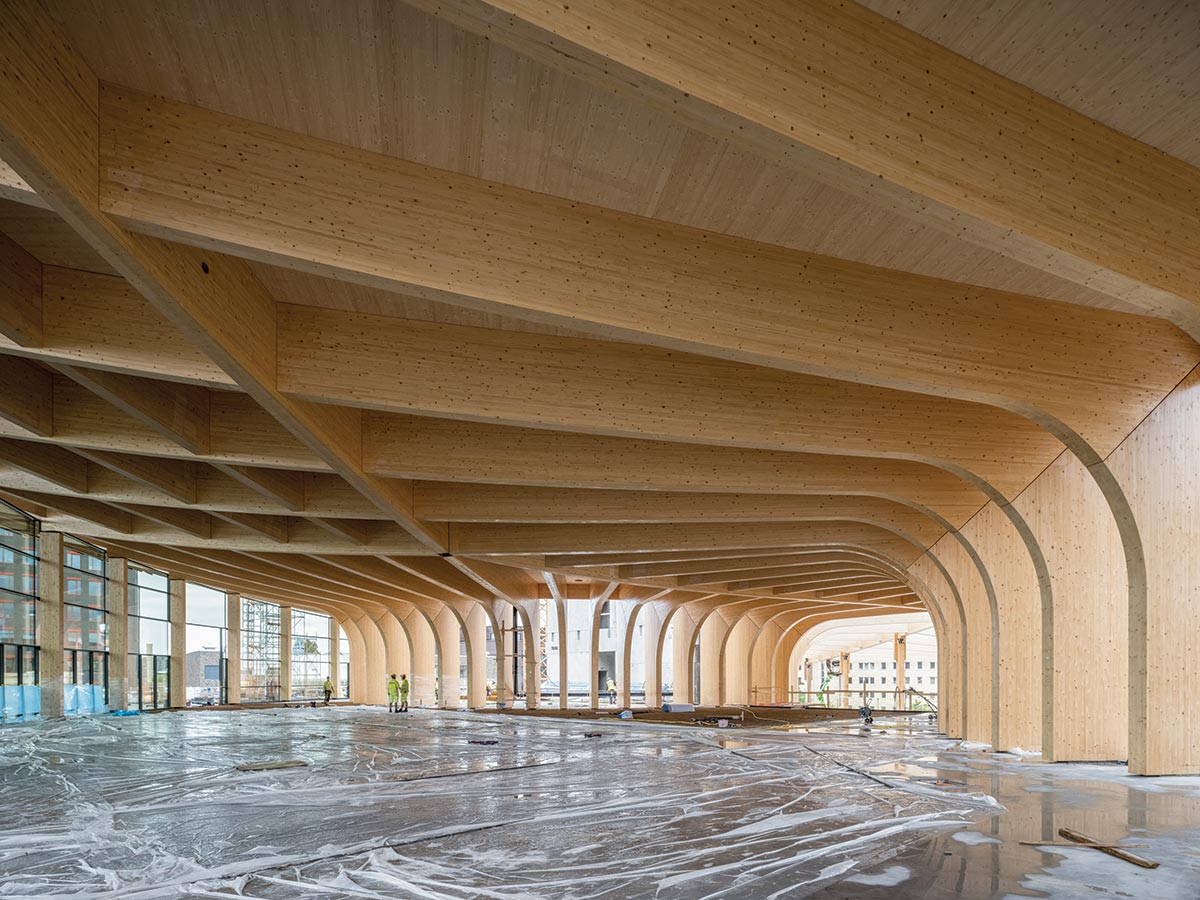
Photo © RASMUS HJORTSHØJ
Structural elements stand as tall as 50 feet and span distances of 115 feet.

Photo © RASMUS HJORTSHØJ
The project takes a decidedly modern approach to the country’s long tradition of wood construction. The vertical and horizontal structural members, made of glue-laminated timber (glulam), are enormous: some of the columns are as tall as 50 feet, while the beams span as much as 115 feet. Due to their size, they were sourced in Austria, where computer-controlled fabrication allowed the curved pieces to be cut with a high degree of precision. Metal connectors hidden inside the wood members provide rigidity. The floor and roof slabs are CLT (cross-laminated timber), which was sourced locally. Both the glulam and the CLT, made from spruce and pine, are 100 percent certified by PEFC (Programme for the Endorsement of Forest Certification).
Reflecting on timber construction, lead design architect Filip Francati says, “Despite strides in structural development, aesthetic expression hasn’t kept pace.” Stenberg Ringnér concurs, adding, “There is a perception that if you build in timber, you can only build boxes.” But the World of Volvo, he points out, has challenged this expectation. The project takes inspiration from nature to create organic forms, rendering them in organic materials.
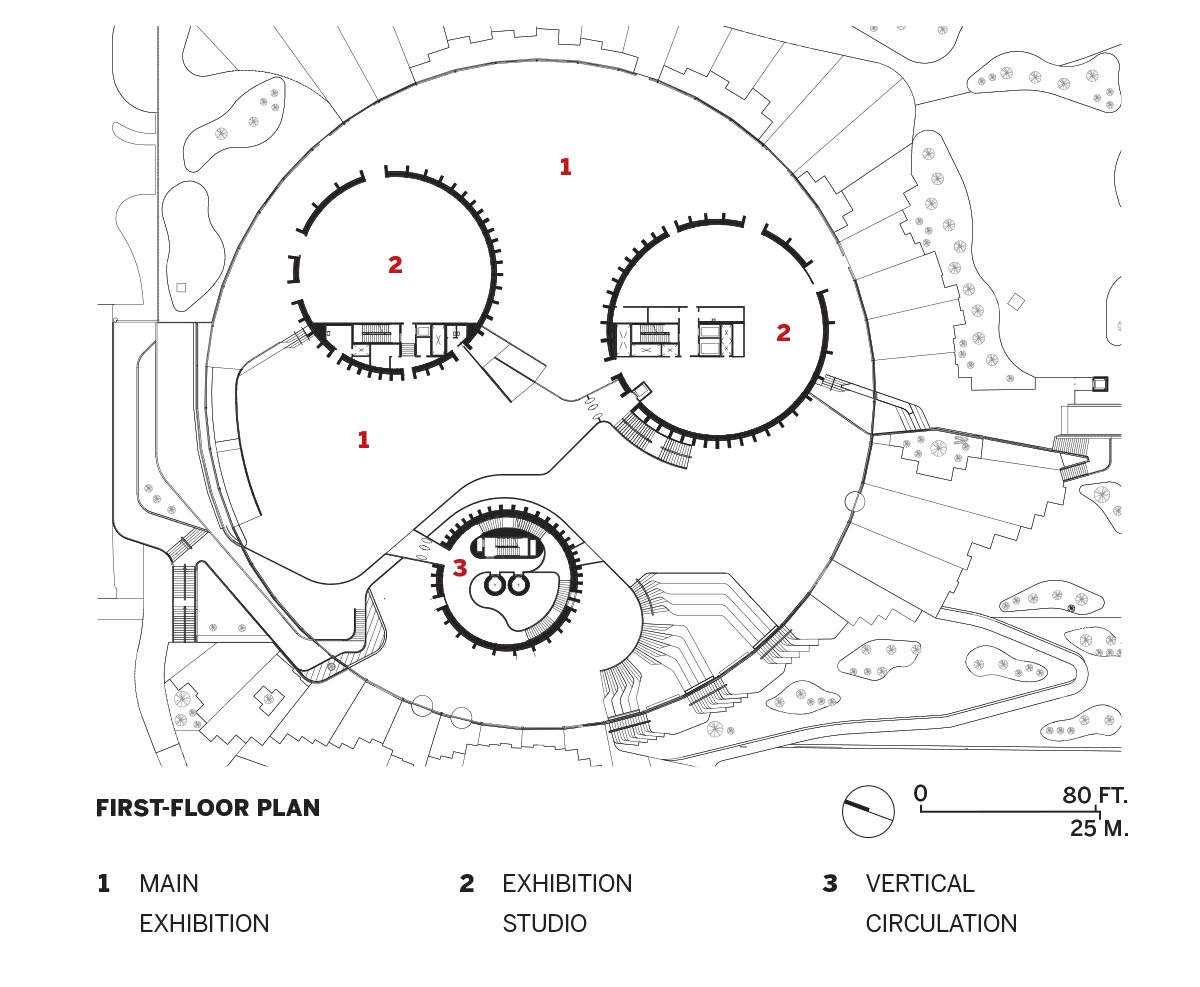
Image Courtesy of Henning Larsen
Credits
Architect: Henning Larsen — Søren Øllgaard, partner design director; Martin Stenberg Ringnér, associate design director; Filip Francati, lead design architect; Anders Astrup Andersen, Anders Åkesson-Björsmo, Carlos Seidenfaden, Fabia Baumann, Leonardo Castaman, Marina Gonzalez, Nanna Neergaard, Phillip Grass, Samuel Morris, Tilde Haremst, Uni Þeyr Jónsson, design team
Associate Architect: Fredblad
Engineers: Cedås Akustik (acoustics); Confire (fire); Granitor (electrical); Wiehag (glulam); Optima Engineering and BRA Teknik (concrete); Brion and Andersson & Hultmark (ventilation)
General Contractor: BRA
Consultants: Tyréns (accessibility)
client: AB Volvo and Volvo Cars
Size: 236,000 square feet
Cost: withheld
Completion date: 2024
Sources
Curtain Wall: Lindner Scandinavia
Interior finishes: Nordisol (acoustical ceiling); Lindner Scandinavia (woodwork); Kode Plåt (steel panels)
Doors: Vitrocsa









